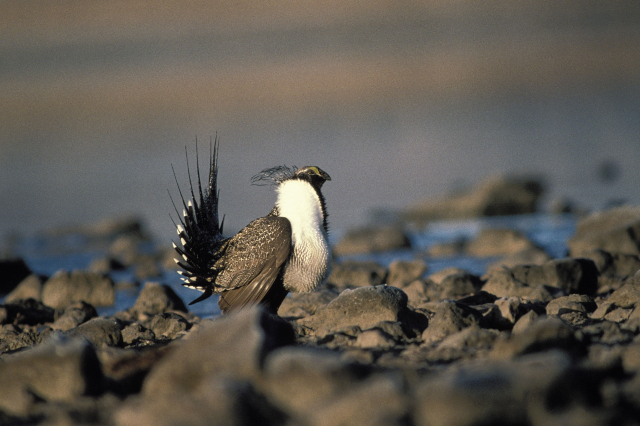Nevada gets $2 million to boost sage grouse habitat
CARSON CITY — Nevada is receiving a $2 million grant from the Department of Defense to protect and restore sage grouse habitat within the Navy's training grounds around Naval Air Station Fallon, officials announced Thursday.
The funding from the Military Services' Readiness and Environmental Protection Integration Program will help leverage more than $4 million from other partners to protect and rehabilitate more than 11,000 acres of prime greater sage grouse habitat.
"This unique partnership between the military and environmental partners is the first of its kind in Nevada, and I appreciate having the military as a new partner in our efforts to protect sagebrush habitat and the greater sage grouse," Gov. Brian Sandoval said in a statement.
Others committed to the effort include the Nevada Department of Wildlife, Naval Air Station Fallon, the Nevada Land Trust, The Nature Conservancy, Nevada Conservation Districts program, U.S. Bureau of Land Management and U.S. Department of Agriculture's Natural Resource Conservation Service.
It's the first time Nevada has applied for funding under the program, which allows Military Services to enter into cost-sharing partnerships with state and local governments and private organizations to protect compatible land uses around military installations.
"We are thrilled to be able to move forward at an increased pace to protect parcels of greater sage grouse habitat, thanks to the REPI Challenge award and the commitment by so many partners," said Tony Wasley, state Department of Wildlife director.
Announcement of the grant comes as the U.S. Fish and Wildlife Service is preparing to announce next month whether the chicken-size bird deserves protection under the Endangered Species Act.
The bird found in 11 Western states and portions of Canada once numbered in the millions but environmentalists say their numbers have plummeted in recent decades. Threats to sage grouse include wildfires, development that provides perches for predators, and overall loss of sagebrush habitat.
States have been working with federal land managers over the past few years to develop plans to protect the bird to try to stave off federal intervention. Many in the West fear a listing could hamper energy development and curtail ranching and farming, threatening rural economies.
Contact Sandra Chereb at schereb@reviewjournal.com or 775-687-3901. Find her on Twitter: @SandraChereb

















